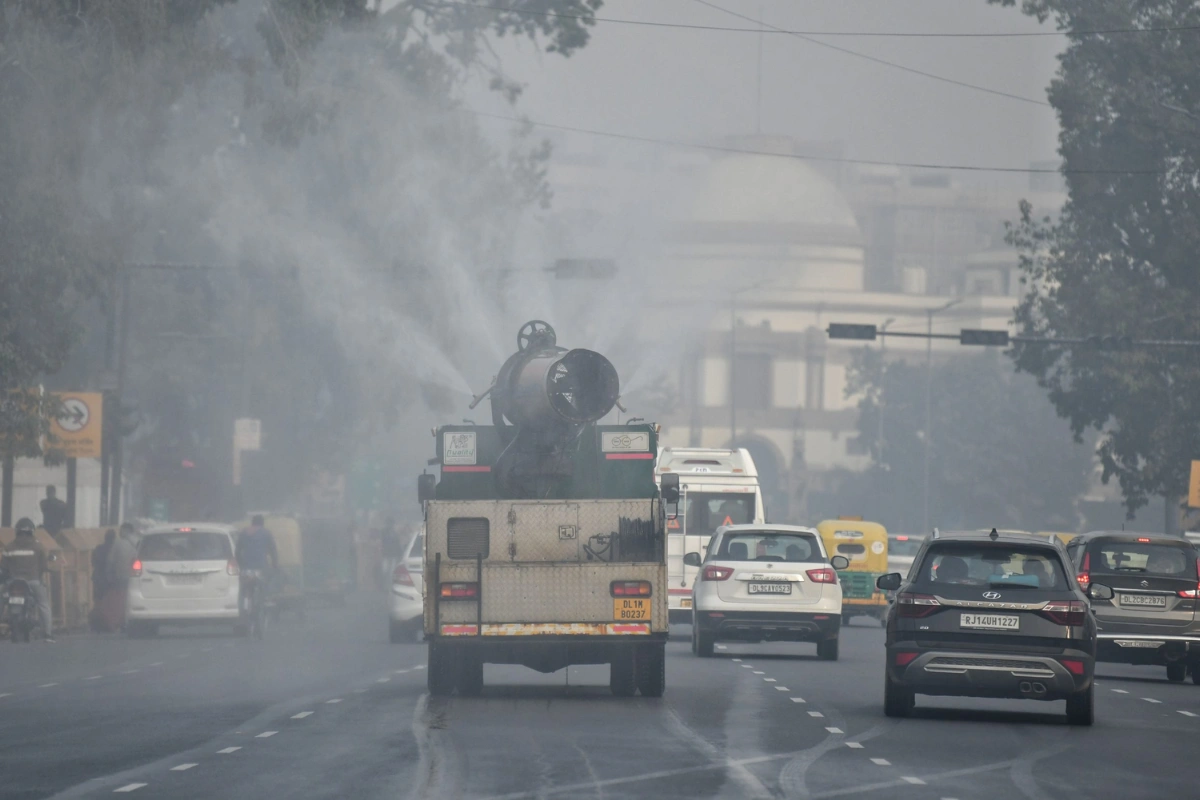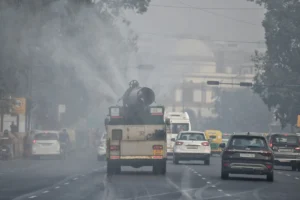
Delhi-NCR’s air quality worsened sharply on Sunday, with the region engulfed in dense smog as the average Air Quality Index (AQI) climbed to 380—firmly in the ‘very poor’ category.
According to the Central Pollution Control Board (CPCB), several locations in Delhi breached the ‘severe’ threshold, raising fresh concerns about public health and mobility.
At 7:15 AM, the city’s northern and western areas recorded some of the day’s worst pollution levels.
Jahangirpuri registered an AQI of 438, placing it in the ‘severe’ category. Bawana (431), Anand Vihar (427), and Ashok Vihar (421) showed equally hazardous readings, highlighting the widespread nature of the pollution crisis.
In the National Capital Region, Noida’s AQI stood at 396, just below severe levels, while Greater Noida’s AQI matched Delhi’s average at 380.
Ghaziabad fared worse, touching 426 and entering the severe band. Gurugram and Faridabad recorded better but still worrying readings of 286 and 228, respectively, placing them in the ‘poor’ category.
Revised GRAP: Restrictions Tightened
Amid deteriorating air quality, the Commission for Air Quality Management (CAQM) announced significant revisions to the Graded Response Action Plan (GRAP).
Measures previously applicable only in the ‘severe’ category under Stage IV will now be enforced under Stage III.
These measures include ensuring an uninterrupted power supply to limit diesel generator usage, additional deployment of personnel at congestion hotspots, issuing pollution alerts across platforms, and expanding CNG and electric bus fleets.
Authorities will also increase public transport frequency and introduce differential fares to promote off-peak travel.
Several curbs earlier placed under Stage III for the ‘very poor’ category—such as staggered working hours for government offices in Delhi, Gurugram, Faridabad, Ghaziabad and Gautam Buddh Nagar—now fall under Stage II. The Centre may also introduce staggered timings for its offices.
Restrictions previously reserved for Stage IV—such as allowing public, private and municipal offices to operate with only 50 per cent staff while the remaining employees work from home—now apply at Stage III.
Aligning with these changes, the Delhi government has directed private offices to function at half capacity, with the remaining employees working remotely.
With pollution levels expected to fluctuate in the coming days, authorities emphasise the need for strict compliance with the revised GRAP to prevent further deterioration.
As Delhi-NCR battles prolonged exposure to toxic air, the updated measures aim to curb emissions and safeguard public health until conditions improve.
Also Read: Severe Pollution Grip Tightens On Delhi-NCR; AQI Crosses 500 Mark
To read more such news, download Bharat Express news apps



















